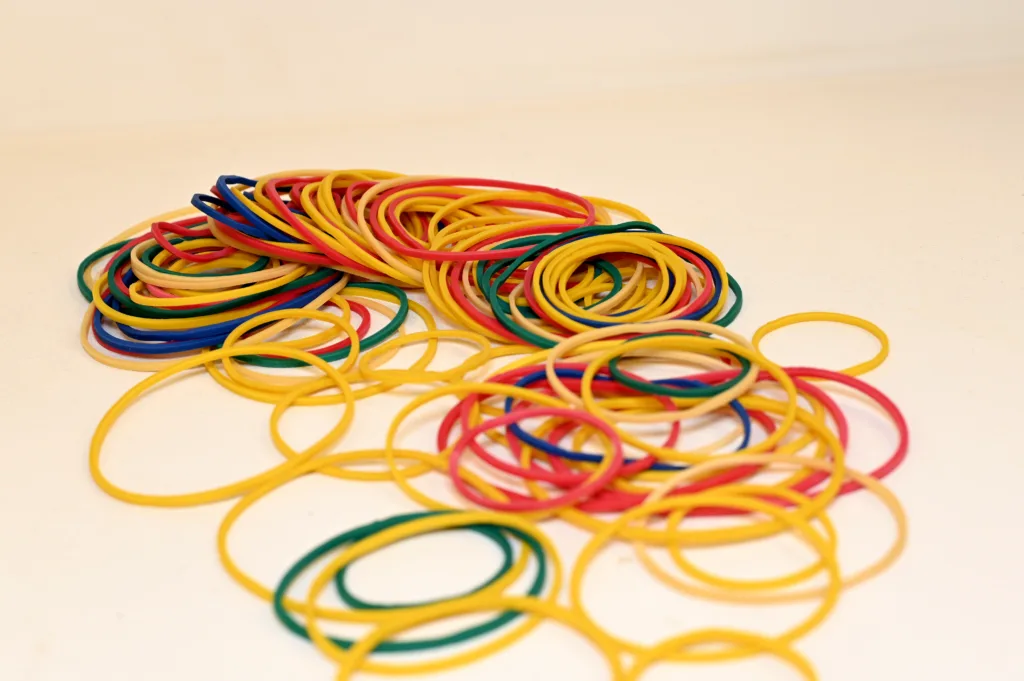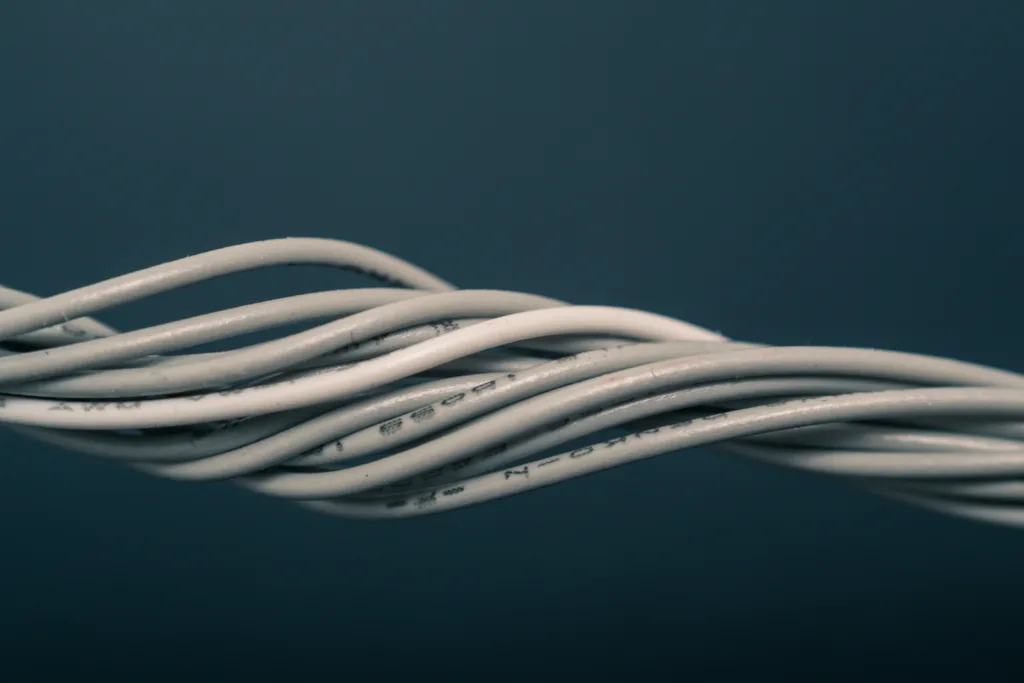When it comes to electricity and conductive materials, rubber is often a topic of confusion. People often ask, “Does rubber conduct electricity?” The answer is no, rubber does not conduct electricity. In fact, rubber is an excellent insulator.
An insulator is a material that does not allow electrical current to flow freely through it. This is because an insulator has very few free electrons or no free electrons at all. Rubber is an insulator because the electrons in its polymer structure are tightly held together, preventing them from moving freely.
The reason for this is the strong bonding of electrons in the valence shell of rubber’s polymer structure. This bond limits the transfer of electric current and makes it an excellent insulator.
However, there are special grades of conductive carbon black and other conductive fillers such as metal spheres, metal, or coated spheres that can be added to rubber to make it conductive. These fillers help to create a path for electrons to flow through the material, making it conductive.
It’s important to note that not all rubber materials are created equal. Rubber gloves and rubber shoes, for example, are only effective in protecting from electricity if they are made from 100% pure rubber with no holes or tears. These are the same types of gloves and shoes that electrical linemen wear to protect themselves from electrical current.
So, whle rubber is an excellent insulator and does not conduct electricity on its own, it can be made conductive by the addition of specific materials. It’s important to understand the properties of rubber and how it can be used in different applications to ensure safety and effectiveness.
Is Rubber an Electrically Conductive Material?
Rubber, in its natural state, is an insulator and does not conduct electricity. However, there are special grades of rubber that can be made conductive by the addition of conductive fillers. The most commonly used filler is conductive carbon black, which is added to rubber to create a conductive path. Other conductive fillers include metal spheres, such as gold, silver, or copper, or coated spheres, such as copper or silver-coated glass/metal spheres. These fillers create a conductive network within the rubber, allowing it to conduct electricity. The conductivity of the rubber depends on the type and amount of filler used. Conductive rubber is often used in applications such as electrostatic discharge (ESD) protection, electromagnetic interference (EMI) shielding, and in the production of flexible circuits and sensors.

Does Rubber Block Electricity?
Rubber does not cancel electricity, but it can provide insulation against electrical currents. Rubber is a good insulator because it does not conduct electricity easily. When electricity flows through a material, it encounters resistance, and the amount of resistance determines how much current can flow. Rubber has a high resistance, which means that it can prevent electrical currents from passing through it.
However, it is important to note that using rubber alone does not guarantee protection against electricity. The rubber must be of high quality and must not have any tears or holes that could allow electricity to pass through. Additionally, other factors such as voltage, current, and the duration of exposure to electricity must also be taken into account when consiering electrical safety.
Rubber does not cancel electricity, but it can provide insulation against electrical currents. To ensure adequate protection against electricity, it is essential to use high-quality rubber that is free from defects and to take other safety precautions.
Why Rubber Does Not Conduct Electricity
Rubber is a non-conductive material, whch means it does not allow electricity to pass through it. The reason for this is that rubber has a very high electrical resistance, which prevents the flow of electric current. In other words, it has very few free electrons that can move around and carry an electric charge. In rubber, the electrons are tightly bound to the atoms, making it difficult for them to move freely. This is why rubber is often used as an insulator in electrical equipment, to prevent electric current from flowing where it is not supposed to go. The high electrical resistance of rubber also makes it a good material for protecting electrical circuits from damage due to static electricity or other forms of electrical interference. the lack of free electrons in rubber is the main reason why it does not conduct electricity.
The Electrical Conductivity of Rubber
Actually, rubber does not conduct electricity. It is considered an insulator, whch means that it does not allow electrical current to flow through it easily. This is because of its molecular structure, which is made up of long chains of carbon and hydrogen atoms. These chains are bound together by strong covalent bonds, which hold the electrons in their valence shells tightly in place. As a result, the electrons are not free to move around and carry electrical charge, and thus, rubber cannot conduct electricity. In fact, the insulating properties of rubber make it an ideal material for use in electrical wiring, cables, and other electrical equipment, where it helps to prevent electrical shocks and short circuits.
Is Rubber an Effective Electrical Insulator?
Rubber is an excellent electrical insulator. It is a natural insulator that is widely used in the electrical industry due to its ability to slow down the movement of electrons, which prevents the transfer of electricity. Rubber is considered one of the most effective and efficient electrical insulators in the world. It is commonly used to create compact electrical and electronic components, such as wires, cables, and connectors, to prevent the risk of electricity transfer. Rubber electrical insulators are also widely used in the construction of high-voltage power lines, transformers, and other electrical equipment, whre their insulating properties are essential for safe and reliable operation. rubber is a highly reliable and cost-effective material for electrical insulation, making it an ideal choice for a wide range of applications in the electrical industry.

Is Rubber Impervious to Electricity?
Rubber is not invincible to electricity, but it is an excellent insulator. The insulating property of rubber is due to its molecular structure, which prevents the free flow of electrons. Thus, rubber can limit the transfer of electricity. However, if a high voltage is applied, rubber can break down and become conductive. This is because the electric field can ionize the rubber molecules, which allows electrons to flow freely through the material. Therefore, although rubber is an excellent insulator, it is not invincible to electricity and can conduct electricity under certain conditions.
Effects of Electricity on Rubber
When electricity touches rubber, the rubber acts as an insulator and prevents the electrical charge from flowing through it. This is because rubber is made up of molecules that are tightly bound together and do not allow electrons to move freely, which is necessary for electricity to flow. As a result, the rubber will not conduct electricity and is considered a safe material for protecting against electrical shock. However, it is important to note that if thee is a path for the electrical charge to bypass the rubber and reach a conductive material, such as metal, the rubber may not provide full protection. Therefore, it is important to always follow proper safety procedures when working with electricity to avoid any potential hazards.
Is Natural Rubber a Good Conductor of Electricity?
Natural rubber, also known as latex, is not inherently conductive. However, it can be made conductive by adding conductive fillers such as carbon black or metal particles. The conductivity of natural rubber can vary greatly depending on the type and amount of filler added. Additionally, the conductivity can be further enhanced by incorporating conductive materials like PEDOT:PSS into the rubber matrix. natural rubber can be made conductive but it requires the addition of conductive additives.
Does Rubber Conduct Electricity?
A type of rubber that can conduct electricity is known as conductive elastomer. Conductive elastomers are made by adding conductive particles such as carbon to the raw material before it is set. This conductive rubber can be made from a variety of materials, including natural rubber and synthetic substitutes. The addition of conductive particles to the rubber results in the ability to conduct electricity. Conductive elastomers are commonly used in applications such as electrical shielding, grounding, and EMI/RFI suppression.

The Electrical Capacity of Rubber
Rubber is generally not a good conductor of electricity and is actually more of an insulator. As such, it can handle very low levels of electricity without conducting electricity. However, the amount of electricity that rubber can handle without breaking down depends on the specific type of rubber and the conditions under which it is being used. In general, rubber that has been specifically designed for electrical applications can handle higher levels of electricity than standard rubber. This is bcause it has been formulated to have higher dielectric strength, which is a measure of its ability to withstand electrical stress without breaking down. Nonetheless, it is always recommended to consult the manufacturer’s specifications for the specific type of rubber being used to determine its electrical capabilities.
Conclusion
Rubber is an insulator and does not conduct electricity. Its tightly held electrons and lengthy polymer structure prevent the free flow of electrons that are necessary for electrical conductivity. However, special grades of conductive carbon black or conductive fillers such as metal spheres, gold, silver or copper can be incorporated into rubber to make it conductive. It is important to note that rubber gloves and shoes can protect against electricity only if they are 100% pure rubber with no holes or tears. Therefore, understanding the properties of rubber and its conductivity is crucial in vrious industries such as electrical engineering, automotive, and manufacturing.
